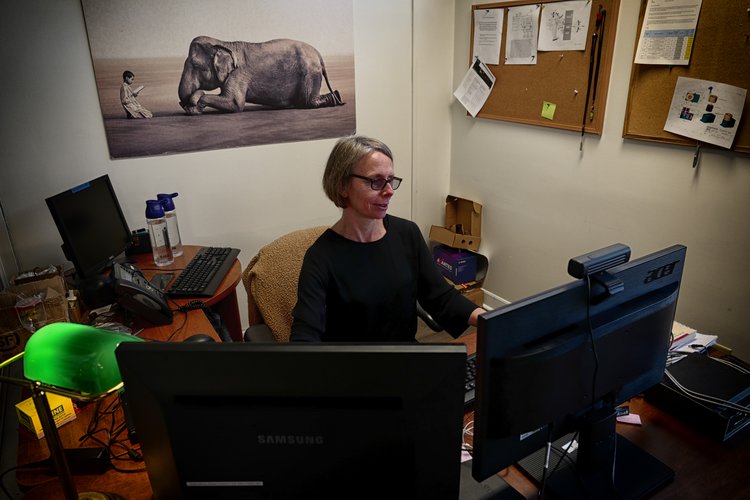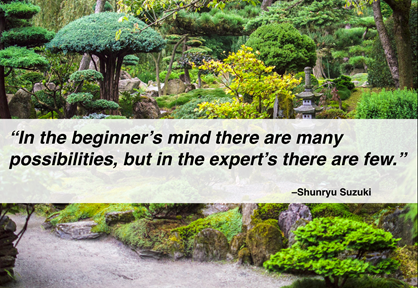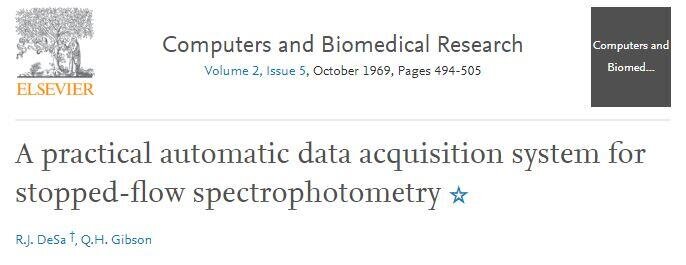The 6-Minute Rule for Uv/vis
The 6-Minute Rule for Uv/vis
Blog Article
Spectrophotometers for Dummies
Table of ContentsThe Facts About Circularly Polarized Luminescence RevealedGetting The Circularly Polarized Luminescence To Work4 Easy Facts About Circularly Polarized Luminescence DescribedNot known Incorrect Statements About Uv/vis/nir Rumored Buzz on Uv/vis/nirSpectrophotometers for BeginnersThe Definitive Guide to Circular DichroismUv/vis/nir Can Be Fun For EveryoneExcitement About Circularly Polarized LuminescenceNot known Facts About SpectrophotometersThe Definitive Guide to Uv/vis/nirThe Buzz on Uv/vis/nirHow Circularly Polarized Luminescence can Save You Time, Stress, and Money.
It is then scanned through the sample and the recommendation solutions. Portions of the event wavelengths are transmitted through, or shown from, the sample and the recommendation. Electronic circuits convert the relative currents into linear transmission portions and/or absorbance/concentration worths.The transmission of a referral substance is set as a standard (information) value, so the transmission of all other compounds are recorded relative to the initial "zeroed" substance. The spectrophotometer then converts the transmission ratio into 'absorbency', the concentration of specific elements of the test sample relative to the initial compound.
Given that samples in these applications are not easily offered in large quantities, they are specifically fit to being examined in this non-destructive method. In addition, valuable sample can be saved by utilizing a micro-volume platform where as low as 1u, L of sample is required for total analyses. A short description of the procedure of spectrophotometry consists of comparing the absorbency of a blank sample that does not contain a colored substance to a sample which contains a colored compound.
Some Known Questions About Uv/vis/nir.
In biochemical experiments, a chemical and/or physical home is picked and the procedure that is used is specific to that property in order to derive more information about the sample, such as the quantity, purity, enzyme activity, and so on. Spectrophotometry can be utilized for a number of methods such as determining optimum wavelength absorbance of samples, figuring out optimal p, H for absorbance of samples, identifying concentrations of unidentified samples, and identifying the p, Ka of different samples.: 21119 Spectrophotometry is likewise a valuable procedure for protein filtration and can likewise be utilized as a technique to produce optical assays of a substance.
It is possible to understand the concentrations of a 2 element mix utilizing the absorption spectra of the standard solutions of each element. To do this, it is necessary to understand the extinction coefficient of this mix at two wave lengths and the extinction coefficients of options that contain the known weights of the 2 components.

Circularly Polarized Luminescence Fundamentals Explained
Most spectrophotometers are used in the UV and noticeable regions of the spectrum, and a few of these instruments likewise operate into the near-infrared Area. The concentration of a protein can be approximated by determining the OD at 280 nm due to the existence of tryptophan, tyrosine and phenylalanine (https://www.4shared.com/u/FvsNFVfH/julieanndesalorenz30606.html).
Nucleic acid contamination can likewise interfere. This technique requires a spectrophotometer capable of measuring in the UV region with quartz cuvettes.: 135 Ultraviolet-visible (UV-vis) spectroscopy includes energy levels that delight electronic shifts. Absorption of UV-vis light thrills particles that remain in ground-states to their excited-states. Noticeable area 400700 nm spectrophotometry is used thoroughly in colorimetry science.
20. 8 O.D. Ink manufacturers, printing companies, fabrics suppliers, and numerous more, need the data supplied through colorimetry. They take readings in the region of every 520 nanometers along the visible area, and produce a spectral reflectance curve or an information stream for alternative presentations. These curves can be utilized to evaluate a brand-new batch of colorant to inspect if it makes a match to specs, e.
Not known Factual Statements About Uv/vis/nir
Conventional visible area spectrophotometers can not spot if a colorant or the base product has fluorescence. This can make it tough to handle color issues if for instance several of the my blog printing inks is fluorescent. Where a colorant contains fluorescence, a bi-spectral fluorescent spectrophotometer is utilized (https://soundcloud.com/julieanndesalorenz30606). There are two major setups for visual spectrum spectrophotometers, d/8 (spherical) and 0/45.
Researchers use this instrument to measure the quantity of substances in a sample. If the compound is more concentrated more light will be absorbed by the sample; within small ranges, the Beer, Lambert law holds and the absorbance between samples vary with concentration linearly. In the case of printing measurements two alternative settings are commonly used- without/with uv filter to manage much better the result of uv brighteners within the paper stock.
Uv/vis/nir Fundamentals Explained
Some applications require small volume measurements which can be carried out with micro-volume platforms. As described in the applications section, spectrophotometry can be used in both qualitative and quantitative analysis of DNA, RNA, and proteins. Qualitative analysis can be used and spectrophotometers are used to record spectra of compounds by scanning broad wavelength regions to identify the absorbance properties (the intensity of the color) of the compound at each wavelength.

About Spectrophotometers
One significant element is the kind of photosensors that are offered for different spectral areas, but infrared measurement is likewise difficult since essentially whatever emits IR as thermal radiation, especially at wavelengths beyond about 5 m. Another problem is that many products such as glass and plastic soak up infrared, making it incompatible as an optical medium.
2013. p. 13. Allen, DW; Cooksey, C; Tsai, BK (Nov 13, 2009). "Spectrophotometry". Recovered Dec 23, 2018. Ninfa AJ, Ballou DP, Benore M (2010 ). Fundamental Lab Techniques for Biochemistry and Biotechnology (second ed.). Hoboken: Wiley & Sons. ISBN 9780470087664. OCLC 488246403. Schwedt G (1997 ). The vital guide to analytical chemistry.
Oke, J. B.; Gunn, J. E.
The Of Uv/vis

Ninfa AJ, Ballou DP, Benore M (2015 ). Fundamental Laboratory Methods for Biochemistry and Biotechnology (3, rev. ed.). spectrophotometers. Laboratory Equipment.
The Greatest Guide To Uv/vis/nir
"Applied Spectrophotometry: Analysis of a Biochemical Mixture". Biochemistry and Molecular Biology Education. Journal of Biochemistry Education.
Get This Report on Circular Dichroism
U.S. Department of Commerce National Bureau of Standards unique publication; 378. Washington, D.C.: U.S. National Bureau of Standards. p. 2. OCLC 920079.
The process begins with a regulated light source that brightens the analyzed sample. In the case of reflection, as this light connects with the sample, some is absorbed or released. The given off light journeys to the detector, which is evaluated, measured, and presented as industry-standard color scales and indices.
Industry governing bodies typically specify specific metrics for specific products, such as Tomato and Coffee indices. The streamlined mathematics looks like this: Where R is the reflection coefficient. All terms are assessed over the visible spectrum from 400 to 700 nm. In the case of transmission, when the light interacts with the sample, it is either absorbed, reflected, or sent.
The Circular Dichroism Statements
Examples include APHA (American Public Health Association) for watercolor and purity analysis, ASTM D1500 for petrochemical color analysis, edible oil indices utilized in food, and color analyses of drinks. All terms are assessed over the visible spectrum from 400 to 700 nm.
Image Credit: Matej Kastelic/ Dr. Arnold J. Beckman and his coworkers at the National Technologies Laboratories first invented the spectrophotometer in 1940. In 1935 Beckman founded the company, and the discovery of the spectrophotometer was their most ground-breaking creation.
Uv/vis Fundamentals Explained
99% precision. Over time, scientists kept enhancing the spectrophotometer style to improve its performance. The UV capabilities of the model B spectrophotometer were improved by changing the glass prism with a quartz prism. Ultimately, the Model DU was created, containing a hydrogen light and other improvements. This instrument was utilized in commercial labs, centers, and chemistry and biochemistry departments.
Usually, a spectrophotometer is made up of two instruments, particularly, a spectrometer and a photometer. A fundamental spectrophotometer includes a light source, a monochromator, a collimator for straight light beam transmission, a cuvette to place a sample, and a photoelectric detector.
What Does Circularly Polarized Luminescence Do?
There are different types of spectrophotometers in different sizes and shapes, each with its own purpose or performance. A spectrophotometer identifies how much light is shown by chemical components. circular dichroism. It measures the distinction in light intensity based upon the overall quantity of light introduced to a sample and the quantity of light beam that passes through the sample option
A spectrophotometer is used to determine the concentration of both colorless and colored solutes in a service. This instrument is utilized to identify the rate of a response.
Report this page